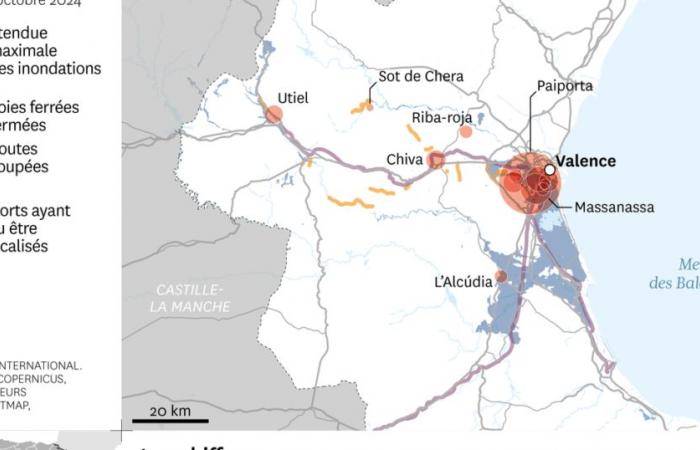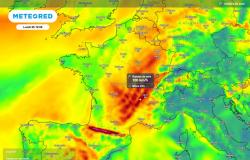The deadly floods of October 29 plunged the east and part of the south of Spain into a state of devastation. The autonomous region of Valencia, by far the most damaged, has already suffered from this type of phenomenon in the past − “in 1957, 1982, 1987, 2007, 2019”, list The World. However, the heavy human toll of this cold drop of 2024, which evolves over the days, in fact “one of the worst tragedies recorded in Europe in recent years”, notes the Barcelona newspaper The Vanguard.
In an article published on its site on November 10, from which we took inspiration for this map, the daily The Country attempted to measure the“footprint left by water” in the city of Valencia and its surroundings based on data from the European Copernicus mapping system. Even if it is not “not completely exhaustive”, this device makes it possible to deliver a “first guess” of the extent of the damage caused by the bad weather of October 29.
A few days after the tragedy, El Periódico de Catalunya recalled that “nearly three million Spaniards” live in flood zones, mostly on the Mediterranean coast, where Valencia is located. “The problem dates back to the urban planning chaos that began in the 1960s,” during the Franco era, where he was “possible to build anywhere”, unlike today, specifies the Catalan newspaper.
“Enormous” material damage
On November 5, the left-wing government detailed a first aid plan amounting to 10.6 billion euros for victims of the recent cold spell. It is primarily aimed at households, businesses and self-employed workers in affected areas. “Entrepreneurs welcomed this government lifeline,” assure The World, even if many Valencians “don’t even have a workplace to return to”, since “everything was taken away” by floods. The Country reports 1,500 kilometers of roads and 99 kilometers of railway lines damaged as well as more than 4,000 buildings affected.
On November 11, new aid totaling 3.7 billion euros was added to the initial envelope. The reconstruction promises to be arduous and will take months, as the material damage is “huge”, asserts The Vanguard.
At the same time, the disaster put Spain's decentralized model to the test, against a backdrop of an exacerbated divide between left and right. A “breach” even opened “in collective morale”, because the State is accused of not having been able to protect its fellow citizens, and “it will be difficult to repair”.
The autonomous Valencian government, led by the conservative Carlos Mazón, is facing strong criticism due to the“incompetence” of its executive in the prevention and management of the crisis, while the central government, of the left and led by the socialist Pedro Sánchez, is criticized for not having triggered the state of emergency of national interest, which would have made it possible to take control of the conduct of operations.






